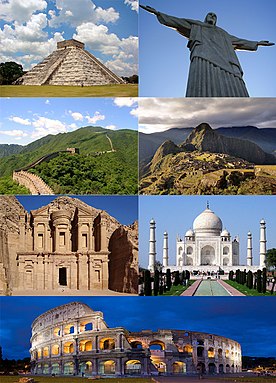 The Council on Tall Buildings and Urban Habitat,
an organization that certifies buildings as the "World’s Tallest",
recognizes a building only if at least fifty percent of its height is
made up of floor[1] Structures that do not meet this criterion, such as the CN Tower, are defined as "towers".
The Council on Tall Buildings and Urban Habitat,
an organization that certifies buildings as the "World’s Tallest",
recognizes a building only if at least fifty percent of its height is
made up of floor[1] Structures that do not meet this criterion, such as the CN Tower, are defined as "towers".plates containing habitable floor area.
There are dozens of radio and television broadcasting towers which measure over 600 metres (about 2,000 ft) in height, and only the tallest are recorded in publicly a
Debate over definitions
The assessment of the height of artificial structures has been controversial. Various standards have been used by different organisations which has meant that the title of world's tallest structure or building has changed depending on which standards have been accepted. The aforementioned Council on Tall Buildings and Urban Habitat have changed their definitions over time. Some of the controversy regarding the definitions and assessment of tall structures and buildings has included the following:- the definition of a structure, a building and a tower
- whether a structure, building or tower under construction should be included in any assessment
- whether a structure, building or tower has to be officially opened before it is assessed
- whether structures built in and rising above water should have their below-water height included in any assessment.
- whether a structure, building or tower that is guyed is assessed in the same category as self-supporting structures.

- whether only habitable height of the building is considered
- whether communication towers with observation galleries should be considered "habitable" in this sense
- whether rooftop antennas, viewing platforms or any other architecture that does not form a habitable floor should be included in the assessment
- whether a floor built at a high level of a telecommunications or viewing tower should change the tower's definition to that of a "building"
 .Tallest structures Main article: List of tallest structures in the worldWarsaw radio mast, the height record holder from 1974 to 1991.
.Tallest structures Main article: List of tallest structures in the worldWarsaw radio mast, the height record holder from 1974 to 1991.
The CN Tower in Toronto, Ontario, Canada, was the world's tallest freestanding structure from 1975 to 2007.
This category does not require the structure be "officially" opened.The tallest artificial structure is Burj Khalifa, a skyscraper in Dubai that reached 829.8 m (2,722 ft) in height on January 17, 2009.[2] By April 7, 2008 it had been built higher than the KVLY-TV mast in North Dakota, USA.[3] That September it officially surpassed Poland's 646.38 m (2,120.7 ft) Warsaw radio mast, which stood from 1974 to 1991, to become the tallest structure ever built. Guyed lattice towers such as these masts had held the world height record since 1954.
The Petronius Platform stands 610 m (2,000 ft) off the sea floor leading some, including Guinness World Records 2007, to claim it as the tallest freestanding structure in the world. However, it is debated whether underwater height should be counted in the same manner as height below ground is ignored on buildings. The Troll A platform is 472 m (1,549 ft), without any part of that height being supported by wires. The tension-leg type of oil platform has even greater below-water heights with several examples more than 1,000 m (3,300 ft) deep. However, these platforms are not considered constant structures as the vast majority of their height is made up of the length of the tendons attaching the floating platforms to the sea floor. Despite this, Guinness World Records 2009 listed the Ursa tension leg platform as the tallest structure in the world with a total height of 1,306 m (4,285 ft). The Magnolia Tension-leg Platform in the Gulf of Mexico is even taller with a total height of 1,432 m (4,698 ft).
 Taipei 101
in Taipei, Taiwan, set records in three of the four skyscraper
categories at the time it opened in 2004; at the time the Burj Khalifa
opened in 2010 it remained the world's tallest inhabited building
509.2 m (1,671 ft) as measured to its architectural height (spire). The
height of its roof 449.2 m (1,474 ft) and highest occupied floor 439.2 m
(1,441 ft) had been surpassed by the Shanghai World Financial Center with corresponding heights of 487 and 474 m (1,598 and 1,555 ft). Willis Tower
(formerly Sears Tower) was the highest in the final category: the
greatest height to top of antenna of any building in the world at
527.3 m (1,730 ft).
Taipei 101
in Taipei, Taiwan, set records in three of the four skyscraper
categories at the time it opened in 2004; at the time the Burj Khalifa
opened in 2010 it remained the world's tallest inhabited building
509.2 m (1,671 ft) as measured to its architectural height (spire). The
height of its roof 449.2 m (1,474 ft) and highest occupied floor 439.2 m
(1,441 ft) had been surpassed by the Shanghai World Financial Center with corresponding heights of 487 and 474 m (1,598 and 1,555 ft). Willis Tower
(formerly Sears Tower) was the highest in the final category: the
greatest height to top of antenna of any building in the world at
527.3 m (1,730 ft).Burj Khalifa broke the height record in all four categories for completed buildings by a wide margin.

